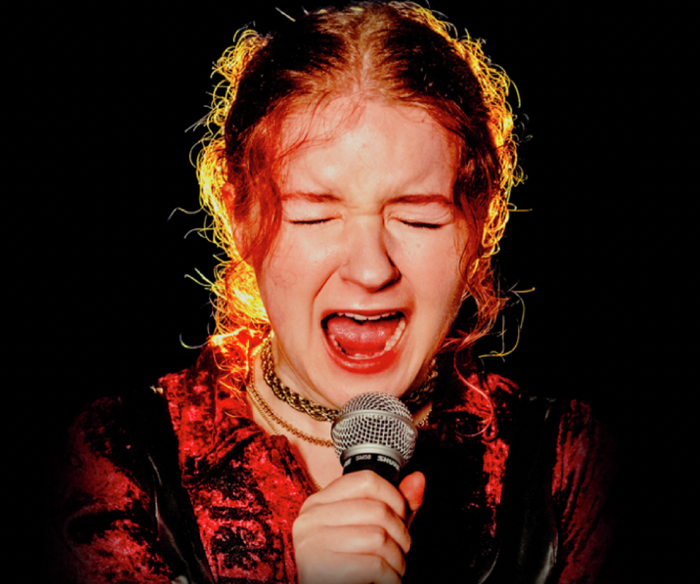The Captive and its New York scandal
Director Rae Morris and producer Elaina Ough take a look at the history behind Week 8′s Corpus mainshow

In September 1926, The Captive’s Broadway premiere made history by being the first play to deal explicitly with lesbianism on a New York stage. Despite the success of its original Parisian production, in America it was met with a storm of homophobic outrage and censorship. The play follows a love triangle: a man in love with a woman in love with another woman. Irene is loved by Jacques, but she is in love with Madame D’Aguines. Despite the fact that Madame D’Aguines is never seen, her lesbian love affair with Irene is central and explicit. The complex web of interpersonal relations will take the stage at the Corpus Playroom from 15-19th March, for now, we’d like to unveil the rich cultural and historical context in which this play was originally produced.
“The New York Times condemned its ‘revolting theme’”
1920s Paris was a site of buzzing lesbian culture, a hub of vibrant sapphic visibility, and a city known as the “queer capital of Europe”. Despite larger queer communities in cities such as Amsterdam, Berlin and London, lesbian visibility expressed itself with unmatched flamboyance in Paris. Queer women of high class would frequent a plethora of lesbian-owned cafes, including Le Hanneton and Le Rat Mort, and they would mingle at the most famous lesbian bar of the era, Le Monacle. Parisian cabarets featured lesbian entertainers, and French publishing houses circulated works featuring explicit sapphic love. Nathalie Barney and her legendary Friday soirées were particularly well-known. Barney’s romantic liaisons, rarely monogamous but often life-long, featured in pivotal lesbian works of the time, most notably her lover Liane de Pugy’s novel L’Idylle Saphique (1901) and Radclyffe Hall’s groundbreaking work The Well of Loneliness (1928). Pre-war Paris seemed unfazed by the conservative outrage these works instigated, unaware of the legal crackdown that would follow later that century. It was in this context that The Captive was originally produced.
With The Captive’s transfer to Broadway, however, the critical backlash was quick and brutal. The show did experience popular success, drawing in an enthusiastic audience of mainly women, who made up around 80% of the total audience. Reviewers, on the other hand, were ardent critics, almost wholly horrified by the play’s “obscenity”. The New York Times condemned its “revolting theme”: the lesbian relationship “hang[ing] over the drama like a black pall, a prescience of impending doom”. George Jean Nathan denounced the play as “the most suggestive, corruptive, and potentially evil fraught play ever shown in the American theatre … a documentary in favour of sex degeneracy”. Despite its large audience of avid fans, the play suffered vitriolic homophobic criticism.
On the 9th of February 1927, just under a year after The Captive’s original premiere in Paris, police stormed a Broadway performance and arrested the cast alongside the cast of Mae West’s SEX. They were released on bail on the condition that the play could no longer run in New York. Censorship campaigns against the depiction of homosexuality continued, culminating in the Wales Padlock Act of 1927.
“The play was intended to be a psychological examination of a woman trapped by her ‘unnatural’ desires”
The Wales Padlock Act was a direct assault on homosexual visibility in theatre. It demanded the arrest and prosecution of anybody involved in “immoral drama” depicting “sex degeneracy or sex perversion”. If the producers were found guilty, the theatre would see its doors padlocked for up to a year. This suppressive legislation remained in place until 1967. Basil Rathbone, who played Jacques in The Captive, records his impassioned response to the Act in his autobiography: “A hideous betrayal, this most infamous example of the imposition of political censorship on a democratic society ever known in the history of responsible creative theatre; this cold-blooded unscrupulous sabotage of an important contemporary work of art.”

Interestingly, the playwright behind The Captive, Edouard Bourdet, was not a member of Paris’ queer community, at least not to our knowledge. The play was not intended to be a celebration of lesbian love, but rather a psychological examination of a woman trapped by her “unnatural” desires. The Captive was intended to present lesbianism as a nervous condition closely aligned with hysteria.
Whether this is the way in which audiences understood the play is not for us to say. Perhaps audiences agreed with the premise of the play and watched in grotesque fascination as a woman unravelled under the weight of her “sexual degeneracy”. Perhaps they embraced the Wales Padlock Act, welcoming its promise of a return to cultural propriety in theatre. But perhaps there were others who interpreted the play as we do: a woman held captive by love and the shackles of her contemporaries’ bigotry, and as the story of people learning to love each other as they should. Regardless, The Captive has made its mark as a pioneer for modern queer plays.
The Captive is playing at the Corpus Playroom at 7:00 pm from 15th - 19th March. Get your tickets here.
 News / Candidates clash over Chancellorship25 April 2025
News / Candidates clash over Chancellorship25 April 2025 News / Cambridge professor paid over $1 million for FBI intel since 199125 April 2025
News / Cambridge professor paid over $1 million for FBI intel since 199125 April 2025 Interviews / Dr Ally Louks on going viral for all the wrong reasons25 April 2025
Interviews / Dr Ally Louks on going viral for all the wrong reasons25 April 2025 Comment / Cambridge students are too opinionated 21 April 2025
Comment / Cambridge students are too opinionated 21 April 2025 News / Zero students expelled for sexual misconduct in 2024 25 April 2025
News / Zero students expelled for sexual misconduct in 2024 25 April 2025






